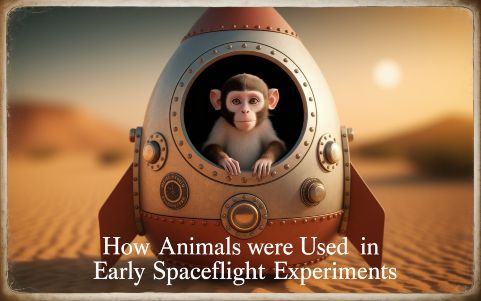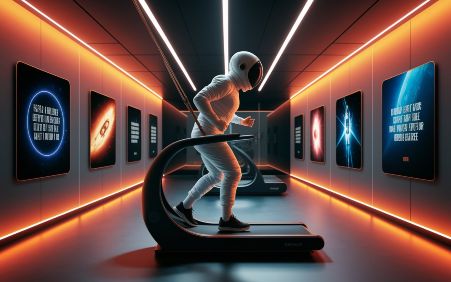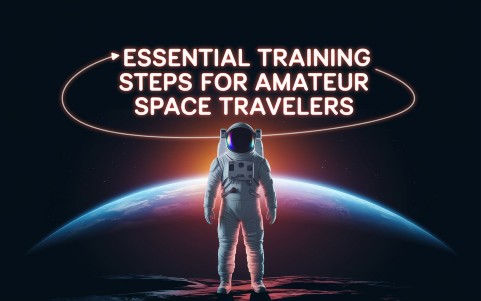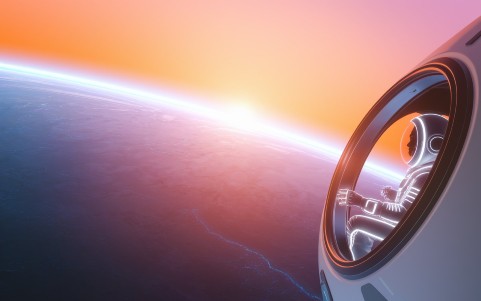Early spaceflight came with many risks. Scientists needed to test survival in space. Animals were vital to this process. These missions helped answer key safety questions. Every animal mission shaped future success.
Animals went into space before humans. They helped prove life could survive launch. Their journeys showed how space affected living bodies. Space travel needed data before sending astronauts. Using animals offered a safer way to explore.
The Purpose Behind Using Animals in Space
Scientists used animals to test unknown factors. They wanted to study gravity and pressure. Animals gave clues to space’s effects. Their presence helped measure health responses. These tests led to safer human missions.
Animals helped explore temperature effects. They showed how bodies reacted to weightlessness. Scientists also tracked heart and lung activity. Each test gave new spaceflight data. No other method worked better in those years.
The First Space Animals and Their Roles
The first space animals were fruit flies. These insects flew aboard a V2 rocket. That test launched in 1947. Fruit flies helped check radiation levels. Their mission proved life could survive short flights.
Next came monkeys like Albert I. This mission tested oxygen and temperature limits. Later missions used mice rats and dogs. Each animal brought new insights. They showed how space affected biology.
Dogs in Soviet Space Missions
The Soviet Union used dogs in space. They chose female strays for these tests. Dogs handled confinement better than other animals. These missions paved the way for human space travel.
Laika became the first animal in orbit. She launched on Sputnik 2 in 1957. Sadly she did not survive the trip. Her mission offered major data for scientists. Laika showed how orbits affected the body.
Soviet scientists used dogs often. They sent more than 50 into space. Many missions ended in survival. These dogs helped plan safe landings. They also helped perfect life support systems.
Monkeys and Apes in American Missions
The United States used monkeys and apes. They chose species like rhesus macaques and chimpanzees. These animals closely resemble humans. Their tests gave insight into human reactions.
Albert II became the first monkey in space. His 1949 mission reached the edge of space. Later came Sam a rhesus monkey. He flew on the Mercury program. Sam helped test capsule systems.
Ham the chimpanzee flew in 1961. He performed tasks during the mission. His success showed humans could operate equipment. Ham’s mission marked a key turning point.
Mice and Rats in Biomedical Research
Mice and rats also played key roles. They were used for medical experiments. These animals helped test long spaceflight effects. Their short lifespans gave fast results.
They helped test muscle and bone loss. Rats also revealed immune system changes. Mice showed brain function changes in space. These animals supported many health studies.
Their small size made them ideal. They fit in compact modules. They also bred quickly. This allowed multi-generation studies. Mice helped shape future space medicine.
Insects and Amphibians in Space Studies
Fruit flies were not the only insects used. Later missions carried wasps and beetles. These creatures showed how small lifeforms react. Their short lifespans helped rapid data collection.
Frogs and toads also flew in space. They helped test ear balance in zero gravity. Amphibians supported research in reproduction. Some even tested cell growth in space.
These missions gave clear patterns. Scientists learned how gravity impacts early growth. Frogs helped study inner ear effects. They helped astronauts prepare for space sickness.
Safety Measures for Space Animals
Animal care grew more advanced with time. Scientists improved life support systems. They added heating and oxygen units. Animals were monitored with sensors and cameras.
Capsules had return systems for safe landings. Some animals returned and lived long lives. Each step reduced mission risks. Safety helped improve public support.
Animal comfort remained a concern. Researchers adjusted diets and rest cycles. Their goal was humane treatment in space. Feedback from missions shaped future rules.
Major Discoveries from Animal Missions
Animals helped scientists understand gravity loss. Muscle weakening was one major effect. Bone thinning also occurred during long flights. These findings helped build better space gear.
They showed how fluids move in zero gravity. Animal tests revealed how hearts adapt. They helped perfect astronaut training. Space medicine advanced through these results.
Animals showed how reproduction changes in space. This shaped theories about future colonization. Their missions expanded our understanding of life support.
The Ethics of Using Animals in Space
Animal use raised major ethical questions. Some missions caused stress and harm. Public opinion led to better treatment. Agencies introduced new animal welfare rules.
Researchers added humane endpoints for tests. They improved medical care post-mission. Ethics boards reviewed all animal experiments. These changes improved mission transparency.
Despite issues animal use led to progress. They helped make human spaceflight safer. Scientists continue to refine testing methods. Ethics guide every future experiment.
Transition to Robots and New Technology
Modern space tests now use machines. Robots replaced many animal experiments. Sensors now measure vital data directly. This reduces reliance on living test subjects.
Artificial organs also help in tests. They model human reactions in labs. Virtual simulations predict space health issues. This shift supports humane science.
Still animals offer unique biological data. Some missions still use small animals. Their use remains rare and ethical. Technology now supports more advanced testing.
The Legacy of Animal Space Missions
Animal missions gave science a strong base. They helped shape human space goals. Data from animals protected many astronauts. Their sacrifice pushed progress in space medicine.
Laika Ham and others became symbols. They proved that life could adapt. Their stories teach courage and risk. Each mission carries lasting value.
Today we honor their legacy with better science. Animal missions built the future of exploration. Their role will not be forgotten.
Pros and Cons of Using Animals in Early Spaceflight
| Pros | Cons |
|---|---|
| Helped test human survival in space | Some animals suffered or died |
| Gave vital biological data | Raised major ethical concerns |
| Improved astronaut safety | Caused public backlash in some cases |
| Enabled life support improvements | Limited communication with subjects |
| Advanced medical research | Alternative methods now exist |
Frequently Asked Questions
Why were animals used before humans in space?
Animals helped test survival and gather data. This reduced risks for future astronauts.
Which animal was first sent into space?
Fruit flies were the first in 1947. They tested radiation effects on living beings.
Did all space animals survive?
Not all survived the journey. However many returned safely and provided key data.
What did animals teach us about space?
Animals revealed gravity effects heart changes and survival needs during spaceflight.
Are animals still used in space today?
Some small animals are still used. But most tests now use robots and simulations.





